The Massacre to Sabotage Nicaraguan University Students’ Demands, One Year On
A year has passed since the attack on Managua’s National Autonomous University (UNAN) and on the Church of the Divine Mercy.
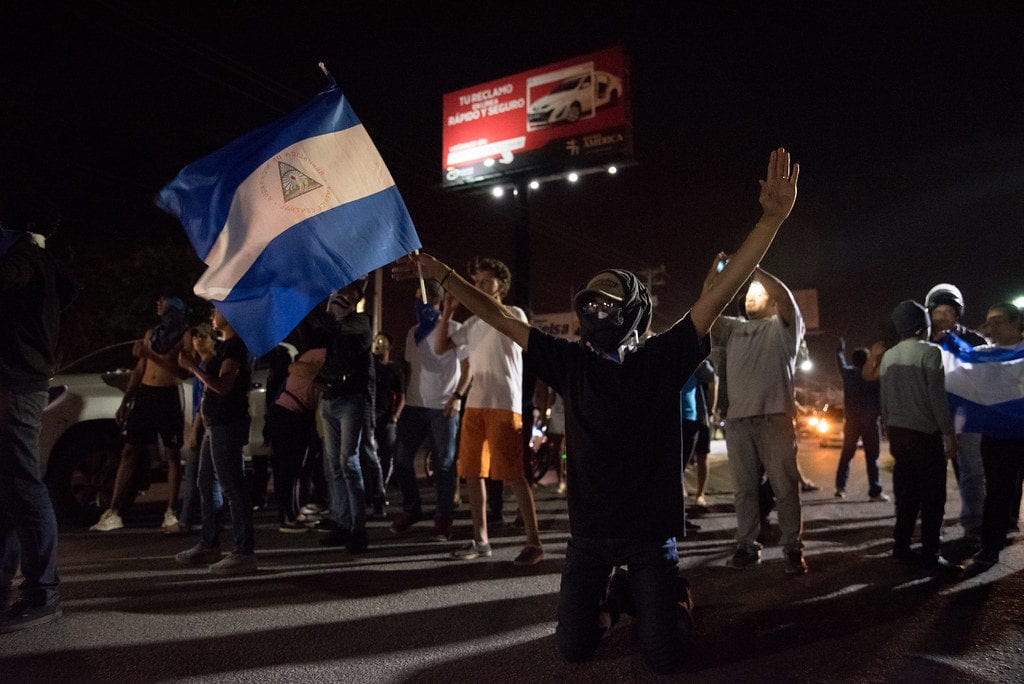
The university students were going to deliver a letter to negotiate their peaceful departure from the university hall they were occupying. Due to the merciless paramilitary attack, they never managed to print it.
By Cindy Regidor (Confidencial)
HAVANA TIMES – There were 17 hours of continuous gunfire, as witnessed by neighbors from the Villa Fontana sector in Managua, who recorded the sounds of the attack on their cell phones. That Friday, July 13, 2018, the Ortega Murillo regime sent their paramilitaries to mount a merciless attack on the students who were peacefully occupying the Nicaraguan National Autonomous University (UNAN).
The students were demanding the departure of Daniel Ortega and of the leaders of the government-allied Nicaraguan National Students’ Union, as well as the reestablishment of university autonomy.
The young people in the UNAN had begun their occupation in May, adding their actions to the growing youth-led citizen rebellion that grew to envelop the entire country.
“On May 7 my son told me, ‘Mama, I want to go to the university’, and I said, ‘We have other things to do.’ ‘But Mama, I promise I’ll be back,’ he said. It was a lie, though. He left for good,” recalls Susana Lopez, mother of Gerald Vasquez. Gerald was a native of Masaya and a student of Advanced Construction Techniques at the UNAN, and also a master of the traditional folk dances.
Gerald used to help his mother in her small business selling juice drinks outside Managua’s Hospital Central He left home to participate in the UNAN occupation, and he was killed by a shot to the head during that attack last July 13.
The beginning of the attack
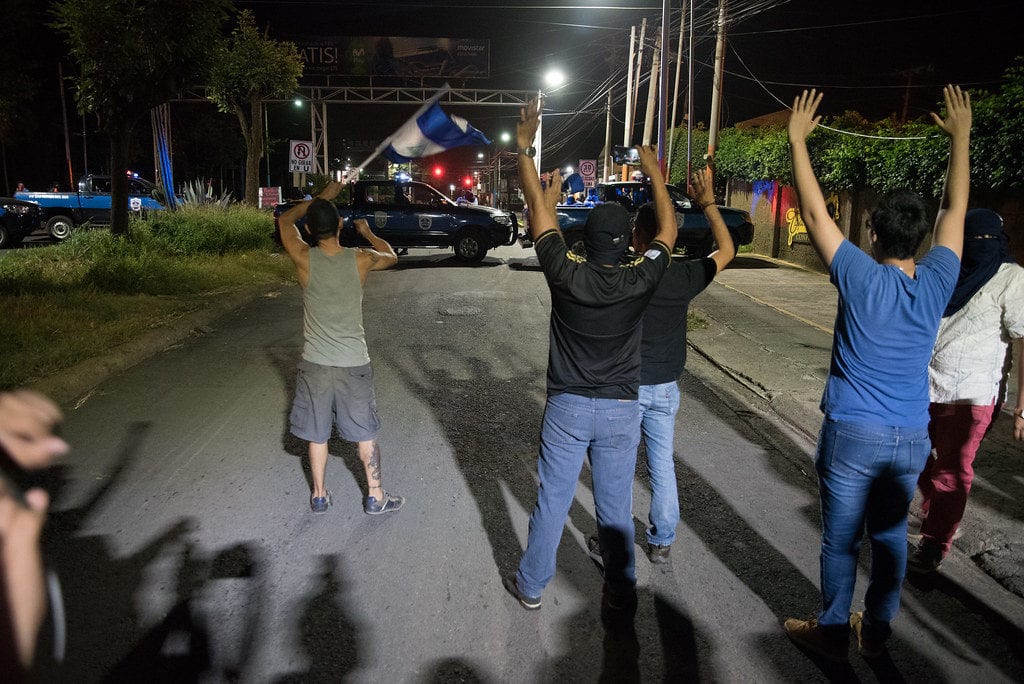
The young people could foresee the magnitude of the coming attack by the number of paramilitary troops with war weapons heading towards the university. Joel Herrera was a medical student who was in the UNAN attending to the students who were wounded during the constant paramilitary attacks over the ten weeks that they remained in occupation of the university installations.
Herrera recalls that a youth with binoculars managed to make out the double cabin pick-up trucks that were slowly approaching. “They were very well equipped: radios, munitions by the ton.” Another youth that lived in the surrounding area called to warn them: “They’re coming for you. Go, get out!”
It had already been a difficult day for Susana Lopez. In Masaya, she recalls, there was terrible tension in the air due to the Repliegue [annual commemoration of the Sandinista front’s strategic retreat from Managua to Masaya in 1979.] “Mortars could be heard from the attack on the Monombo,” neighborhood of the city, she says. “It was such a terrible day that we didn’t even eat. You could feel the tension, the TV channels didn’t say anything. But I never, never imagined the attack that was going on in Managua.
The letter that was never published
Jesus Tefel who coordinated the logistical support for the students, affirms that on that same day the occupiers were drafting a letter to negotiate the peaceful transfer of the university installations over to the authorities, because there was an abundance of credible information about an imminent attack.
“The letter had been drafted. We were connecting the printer so that the student leaders could sign it and we could send it to the Verification and Security Commission and to the Apostolic Nuncio. In this way, we planned to confirm that (the students) were now ready to deliver over the facilities in a civic way, to prevent an attack,” affirms Tefel.
“Apparently, the regime found out that we were seeking a way to facilitate a civic and peaceful surrender of the installations; that would have been a contradiction to their public discourse that there were only criminal elements there….They decided to sabotage the plan for negotiations to end the occupation,” he declares regretfully.
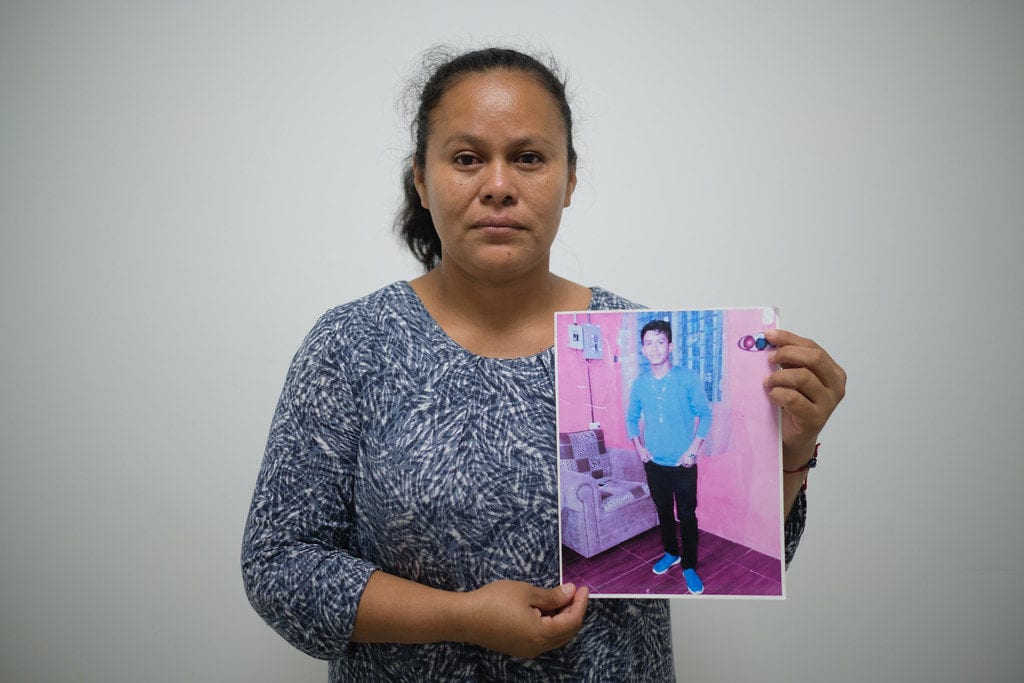
The shots, Joel Herrera recalls, began at midday “directly and continuously. The intention was clear: ‘we’re getting them out, dead or alive.’” The rounds of gunfire resounded without pause, Tefel confirms.
“It was very difficult, because no one wanted to retreat,” says Herrera.
The retreat to the church
In the face of the massive attack, however, the young people decided to leave the hall and take shelter in the nearby Church of the Divine Mercy. “We said: ‘OK, we’re going to take refuge in the church, and then this will end’, but it wasn’t so,” Herrera recalls sadly.
During an interview with Esta Semana last September, the church’s priest and rector, Erick Alvarado, revealed that many of the young people who began arriving were crying, anguished. “Of course we opened our doors to them,” he said. But far from coming to an end, the attack continued for another twelve hours.
Priest Raul Zamora, together with other people, went out in a pick-up to help rescue the youth who were still in the university and couldn’t make it to the church. The truck flew the Nicaraguan flag and that of the Church, as the shots continued being directed against the Iglesia de la Divina Misericordia.
The gunfire didn’t pause until nearly ten at night, when the negotiations with the Verification and Security Commission of the National Dialogue group, and the intervention of Apostolic Nuncio Waldemar Stanislaw Sommertag and Cardinal Leopoldo Brenes, finally attained permission for the ambulances to enter, to take out the wounded and to release U.S. journalist Joshua Partlow of the Washington Post who got trapped while covering the attack.
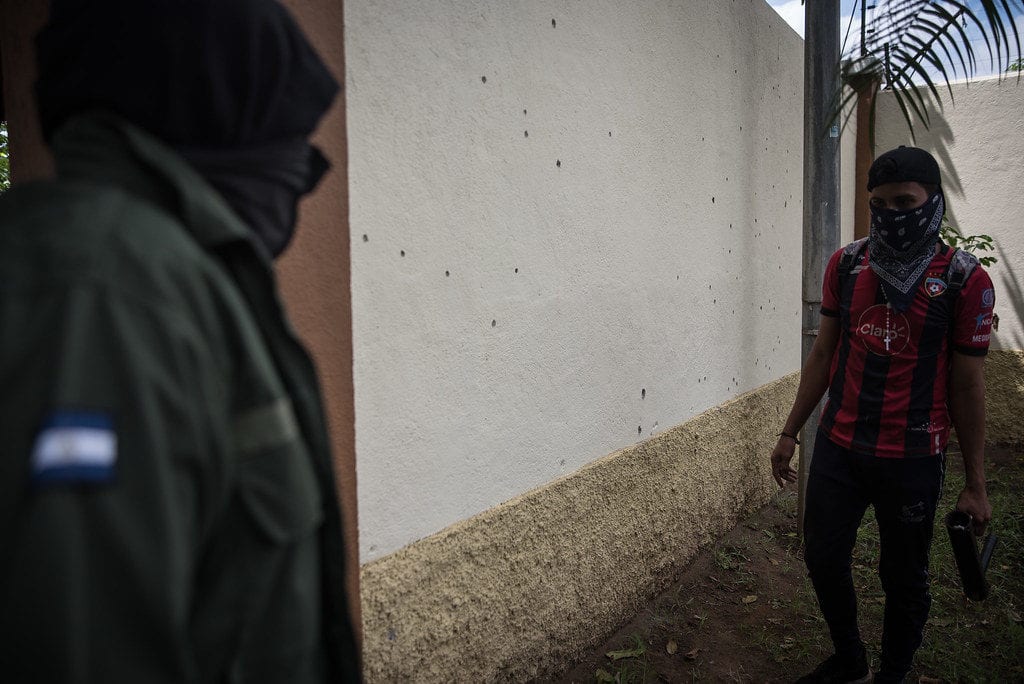
There were still some 200 people left in the church, trapped by the gunfire and with no electricity. Among them were journalists, students and religious leaders.
“With the quantity of bullets and the direction they were aiming, it’s a miracle that more people weren’t killed. Really, the intention was to instill terror in all the people who were there. The amount of force used was totally out of proportion,” Tefel affirms.
Two days after the attack, Father Alvarado stated that he hadn’t believed that the paramilitary would attack the church. “Really, I thought that maybe they’d go up to the barricade at the exit to the church, but no further. By the end, though, the attack was indiscriminate.”
Joel Herrera also recalls the gesture of citizens who came to the area around the church at midnight to support them and demand a cease fire. “In the darkness, feeling that no one could do anything for us now, there was this small light that functioned as a moral and emotional support. That was the caravan. When the people got to the area outside, they kneeled, they sat, they began to sing,” he remembers.
Rosario Murillo’s ruses
During the mediation, Vice President Rosario Murillo and Nicaragua’s foreign minister promised that the attack would end if the students retreated. Tefel questions: “Why didn’t the attack end, then? Why, in reality, weren’t they acting transparently?”
“During several phases of the attack,” he adds, “they said that they would stop the attack if we did such and such a thing: if we got the kids to retreat from the university hall; if they left the barricades; if they did.. I don’t know what…. That would then be done, but instead of stopping, the attack would go further forward. It was just a ruse that the first lady/vice president or the foreign minister used to fool the mediators – the Apostolic Nuncio, the Verification and Security Commission, the Interdisciplinary Group of Independent Experts from the OAS, the Special Follow-up Mechanism for Nicaragua and the Inter-American Commission for Human Rights.”
Tefel feels that the government’s objective was to “instill the greatest possible amount of terror in the young people”.
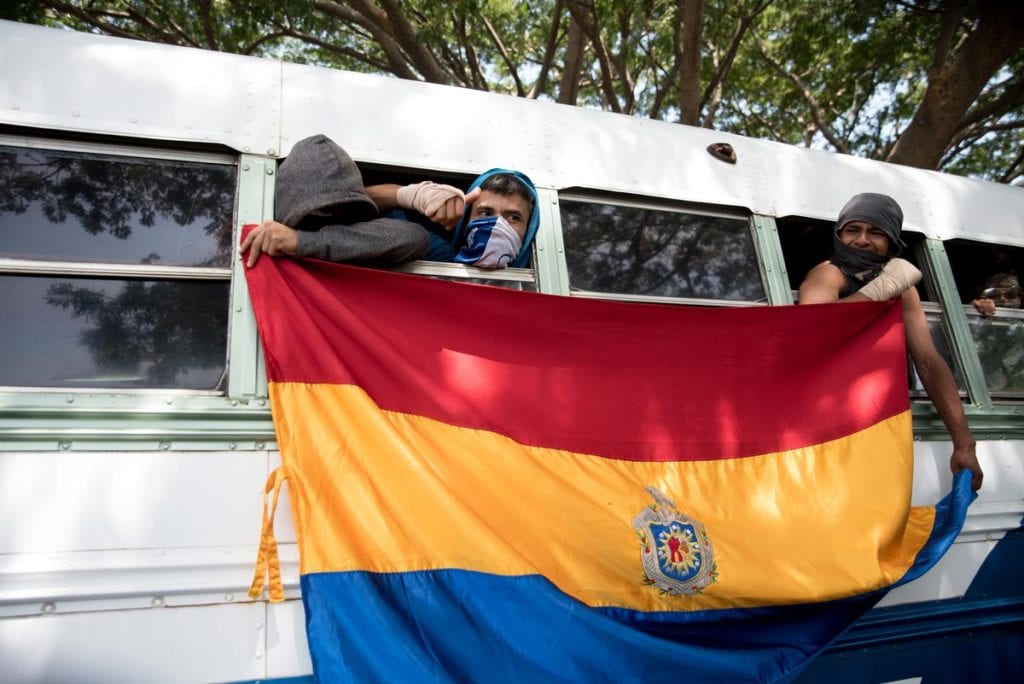
The death of Gerald and Jose Francisco
Father Alvarado recalls the young people’s anguish when at five in the morning they brought in Gerald’s body. He’d been shot in the head, and he died in the parish rectory. “We saw him die; that was enormously painful,” Tefel affirms. One hour later, the journalists and students who were trapped in the church posted news on social media of the death of two young people.
The news also reached Susana Lopez, who at that hour was getting ready to go to Managua with her daughter. The girl’s father called her to find out the news. “Go, but stay calm,” he advised her. At the same moment that Susana was confirming the news, a police patrol came over to them, and she decided to confront them. “Damn you, assassins,” she screamed at them. An official tried to calm her down, but she just screamed again: “I’m not afraid of you. Know why? Because they just took away my son, they killed my son!”
The other youth, Jose Francisco Flores, had been killed before Gerald, during an attack on one of the barricades.
Ortega’s lies
Nine days after their deaths, in the first of a bizarre round of interviews with international news sources, Ortega denied these deaths he was responsible for. “No Nicaraguan has died in any church. That’s totally false,” Ortega responded to Fox News reporter Brett Baier.
One year after the attack, Tefel demands that the truth be brought to light, that there be clarification of what happened, and who was involved. He still considers this attack a disproportionate act of violence.
The young people finally managed to leave the church in the morning of July 14, between 8 and 10 am. They carried the bodies of Gerald and Jose Francisco with them, as they sang the national anthem in their honor.
“When everything stopped, it was unbelievable, it was incredible,” Herrera recalls. “No one believed that everything had really stopped, and that we had survived that attack,” he adds. He still can’t fully describe the sensations they felt when they passed by in the vehicles that were transporting them and saw along the road the paramilitary waving their arms.
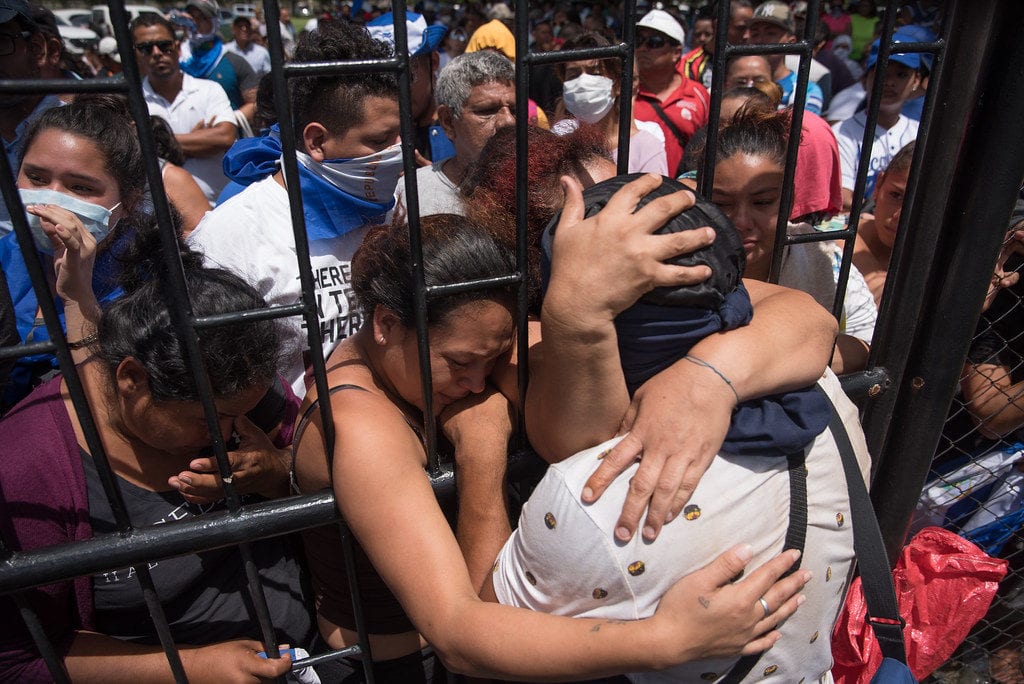
Susana Lopez hasn’t recovered from the absence of her son. “He was in the house with us for a few days [before the attack]. It was a week in which he danced, played, shared with his siblings and told them that he’d be back because he wanted a free Nicaragua, that he was doing this for them, for the future,” she remembers.
This first year without Gerald, she declares, “has been hard, very hard.”
“Not long ago his little brother asked me why Gerald had been shot in the head. I didn’t know how to answer. I demand justice, justice and truth.”






Very curious your statement. It’s exactly what the dictator Somoza said about the armed Sandinistas trying to overthrow him in the 1970s. They were bandits, criminals, etc. In their case they were armed and it was a war between two armed bodies, the guerillas and the government forces. This time it was one sided, the Ortega dictatorship’s police and paramilitary against peaceful protestors. Yes a few people defended themselves with weapons when attacked. But virtually all the 326 killings took place when the police and paramlitary attacked or kidnapped the protestors. All international and national human rights organizations have documented the killings, detentions, suspension of freedoms guaranteed in the Constitution and those forced into exile. The government failed to investigate any of the killings and then recently passed a self-amnesty law hoping to clean the slate as if so many people were willing to forgive and forget and just continue on with their corrupt administration. Good luck
Bunch more of BS. They were not innocent students. The terrorists took over the school and used it as a command center. They had guns and they died for trying to start a war in my country. Only the Blood Thirsty Yanqui regime believes the “peaceful protesters” lies.